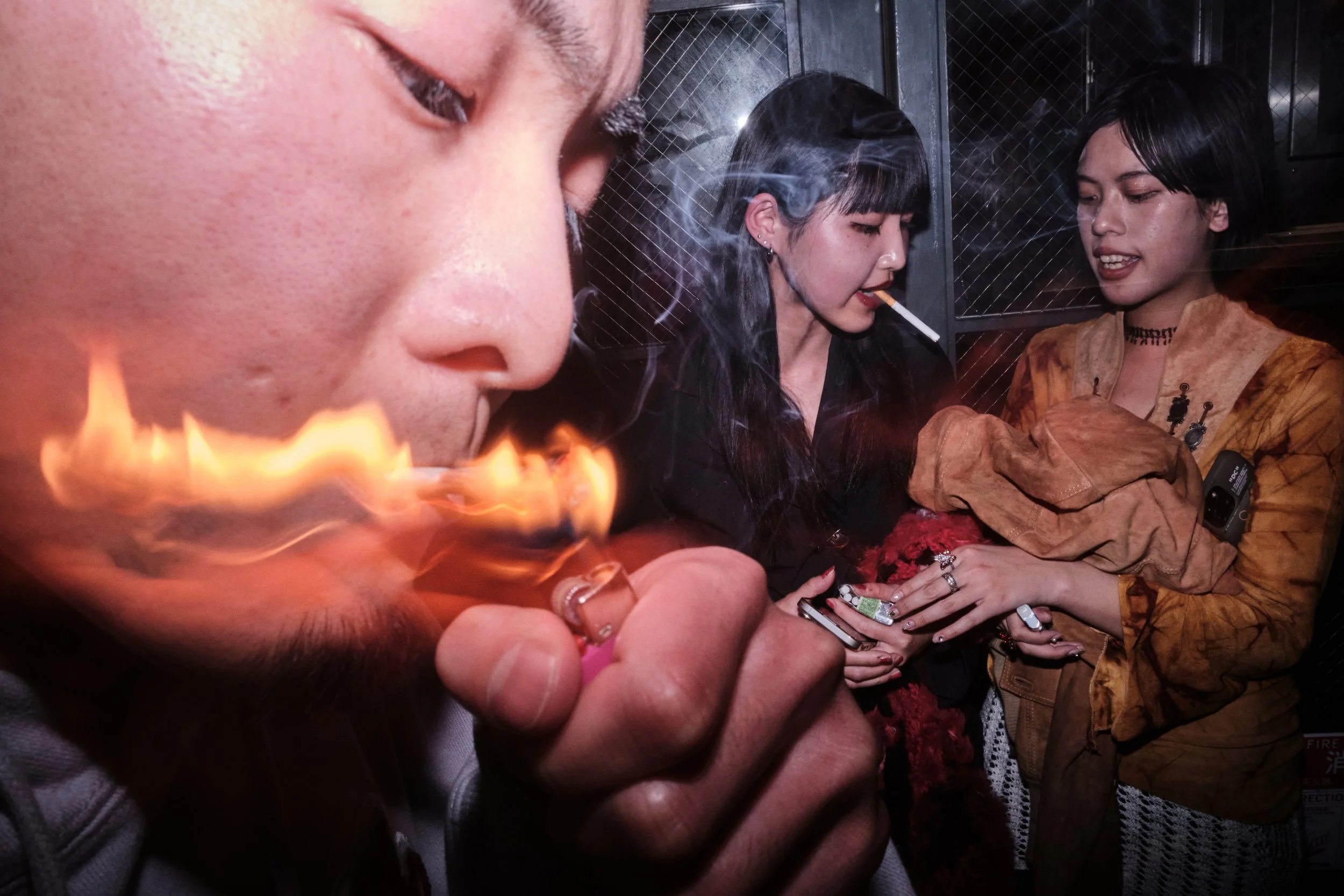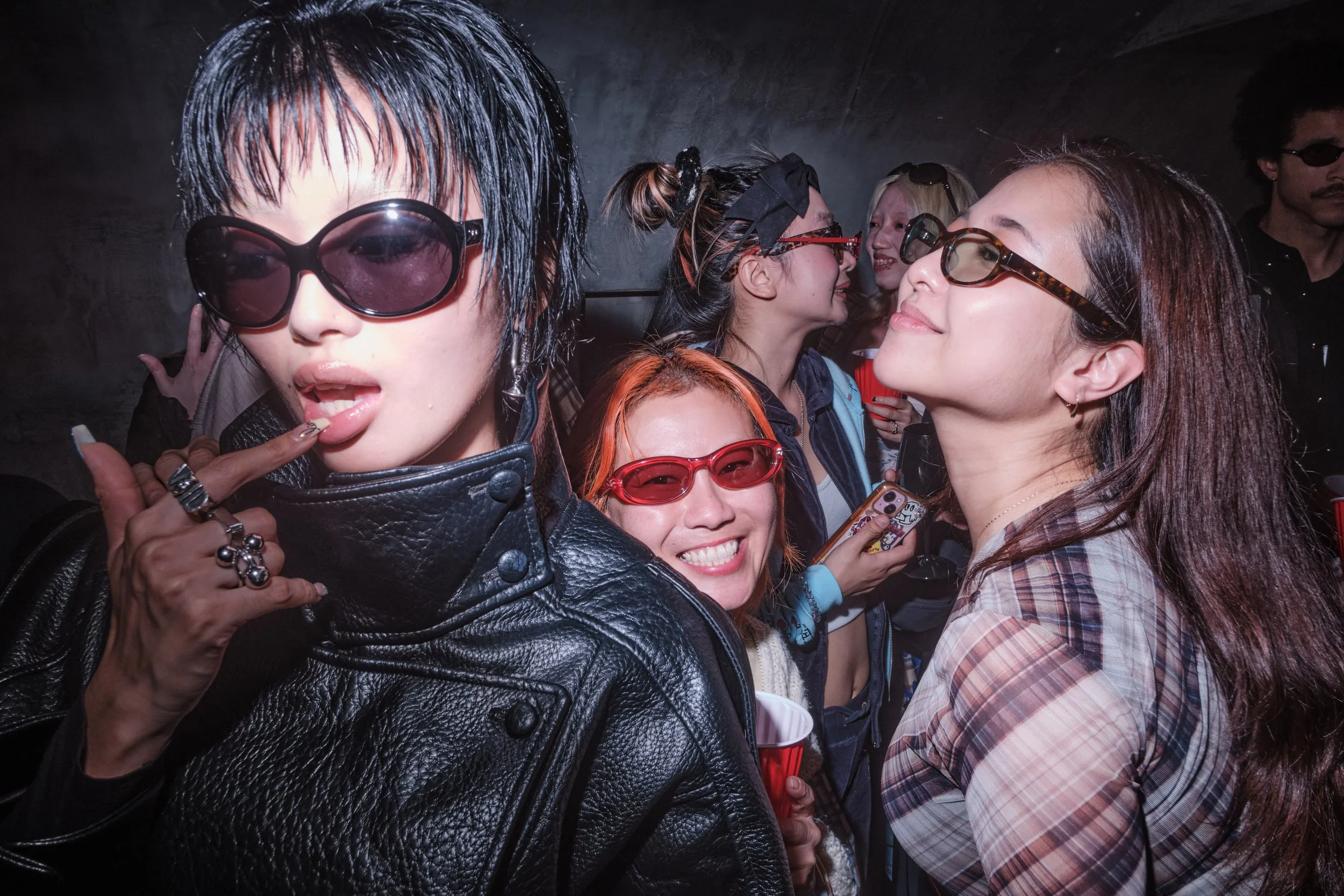Photographing Events Like a Street Photographer
The best compliment I ever received was a complaint. I handed a set of photos to a client—sweaty, flashed-out, messy close-ups of the dancefloor—and they recoiled.
“These photos are too sexy,” they said.
They wanted clean, safe marketing images. But I’ve been shooting Tokyo nightlife since 2019, from the pole dancing clubs of Shinjuku to the hidden karaoke bars of Shibuya, and I know that safe photos are lies.
The Nightclub is a Street
A nightclub is just a condensed street. The chaos is the same, but the proximity is forced. On the street, you have room to run; in a packed club, you have to hold your ground.
I find that using a wide lens forces a confrontation. It demands you get close enough to be part of the moment, rather than just observing it.
When I started, I shot for myself. I wanted the raw conversations between the flash and the subject—that freedom was my currency. But when money got involved, I felt the pressure to deliver the "low-hanging fruit," those standard, boring portraits that just prove people were there.
I realized fast: if I shot for the checklist, I lost the feeling. That "too sexy" comment was a victory. It meant I hadn't succumbed to the cookie-cutter approach.
The Gilden Mindset
Years ago, I saw Bruce Gilden’s work for Gucci. That was the lightbulb moment. He brought a harsh, aggressive street style into high fashion, proving you didn't need to be polite to be commercial.
When I finally studied under Bruce in Osaka this past spring, he didn't teach me settings. He taught me to stop overthinking. He pushed me toward photographers like Larry Fink, who shot parties like they were psychological thrillers and Seiji Kurata, who’s street photography turned the grit of Japan’s red light districts into fine art.
Now, I don't look for "coverage." I wait for the rhythm. I wait for the chaos to align—the hand with the drink, the sweat on the back, the light hitting the makeup—and then I hit the flash.
Start Small, Then Take Space
If you’re a street photographer thinking about shooting events, you don't need to show up with a massive rig on day one. When you are starting out, a big lens can kill the vibe—it reminds people of the real world.
Start with a small pocket camera. It keeps you unassuming and allows you to move through the crowd like a guest, not an employee.
As you get more paid gigs, you’ll naturally claim more space and upgrade your gear. But keeping that "small camera" mindset—where you are embedded in the party rather than standing outside of it—is what keeps the work authentic.
The Texture of the Night
I don't chase clients. If you book me, you know you aren't getting traditional coverage. There are a thousand photographers in Tokyo who will give you clean, bright images where everyone looks perfect.
I’m interested in the mess.
Don't look for the perfect smile. Look for the feeling. Look for the blur and the mistake that tells the truth.
The music stops. The lights go up. The hangover sets in. The only thing left that feels like the party is the photo. Make sure it remembers the night exactly how it was.






